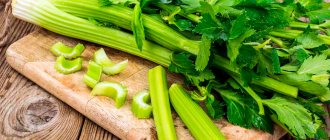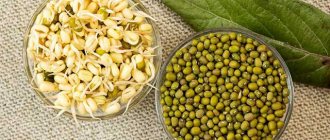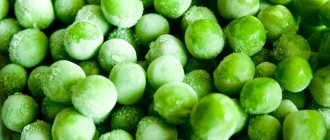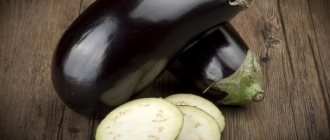Celery is a spicy vegetable that was brought to Russia from Mediterranean countries. Due to the content of a large amount of nutrients and vitamins, celery is considered a leader in terms of benefits among other vegetable crops. Essential oils, which are also included in its composition, give dishes a special aroma and rich taste. Every part of the plant, from root to leaves, is eaten. Raw celery, like processed celery, is tasty and healthy.
We will tell you how to properly clean the plant, store and use it.
What are the benefits of celery?
Before we study the methods of processing and consuming celery, let’s look at the reason for its popularity. A biennial aromatic plant forms a root crop in the first year, in the second year a flower stem develops from it and seeds ripen.
The plant stimulates appetite and has powerful antimicrobial, anti-inflammatory and choleretic effects.
It stimulates the activity of the kidneys, improves the separation of digestive juices, has a mild laxative effect, and increases blood supply to the genitals. Table of the chemical composition of celery (per 100 g of product)
| Vitamins | |
| Vitamin PP | 0.4 mg |
| Beta carotene | 4.5 mg |
| Vitamin A (retinol equivalent) | 750 mcg |
| Vitamin B1 (thiamine) | 0.02 mg |
| Vitamin B2 (riboflavin) | 0.1 mg |
| Vitamin B6 (pyridoxine) | 0.08 mg |
| Vitamin B9 (folic acid) | 21 mcg |
| Vitamin C | 38 mg |
| Vitamin E (tocopherol) | 0.5 mg |
| Vitamin PP (niacin equivalent) | 0.5 mg |
| Macronutrients | |
| Calcium | 72 mg |
| Magnesium | 50 mg |
| Sodium | 200 mg |
| Potassium | 430 mg |
| Phosphorus | 77 mg |
| Microelements | |
| Iron | 1.3 mg |
| The nutritional value | |
| Calorie content | 13 kcal |
| Squirrels | 0.9 g |
| Fats | 0.1 g |
| Carbohydrates | 2.1 g |
| Alimentary fiber | 1.8 g |
| Water | 94 g |
| Starch | 0.1 g |
| Ash | 1 g |
| Organic acids | 0.1 g |
| Mono- and disaccharides | 2 g |
How to peel celery
When planning to peel greens before consuming, familiarize yourself with its varietal characteristics, because... For each type, an appropriate cleaning method is selected.
Regardless of the type of greenery you choose, you need to peel celery stalks according to the following instructions:
- First of all, you need to wash the root, and then get rid of the top of the root and the bottom.
- The roots of the green plant are large in size, so half or ¼ of the root is enough to prepare a tasty dish. Experienced housewives recommend cutting the root vegetable into a couple of pieces and placing it in the refrigerator.
- To remove the skin, use a thin knife or a special vegetable peeler.
- All recesses and problematic areas are cut out.
- Spongy elements do not have a pleasant taste, so they are removed immediately.
- Finally, you need to rinse the treated elements and use them for their intended purpose.
- The prepared pieces are filled with cold liquid to prevent the appearance of dark spots.
How to peel stalk celery
Stem celery is characterized by a pleasant aroma and a rich content of valuable microelements. However, only the thickened part of the root system or stem is used for food. To prepare a tasty and healthy salad based on such greens, follow these steps:
- Prepare the vegetable for use and get rid of any remaining soil from the roots, and then rinse the root in running water.
- Trim the bottom and top of the root vegetables with a knife.
- Cut the vegetable into a couple of parts to clean the desired piece. Place the remaining items in the refrigerator.
- Prepare the skin with a knife or vegetable peeler.
- Next, get rid of damaged areas or dark spots. After peeling, leave only the pulp.
- Finally, rinse the treated root vegetable under running water and fill it with liquid to prevent browning.
The pulp can be used to create delicious soups or broths. It contains rare fibers that have a cleansing effect and remove a lot of waste, toxins and other harmful substances from the body. However, this part of the culture has no taste. Before cooking, it is cut into small cubes or grated with a grater.
How to peel stalked celery
Peeling celery root from the petiole group is quite simple. To carry out the procedure, use a simple paring knife and the following instructions:
- A bunch of greens must be divided into a pair of petioles, which are then washed under warm tap water.
- The lower elements of the crop are cut off, and the upper ones are cleaned for subsequent consumption.
After processing, the petioles need to be cut into small strips or cubes. Based on such products, fresh dietary dishes, pickles or marinades are created. With the help of delicate petioles you can add good taste and aroma to homemade food.
How to Peel Leaf Celery
The leaf variety of celery has the most pleasant taste and aroma. Its greens contain rare vitamins and minerals, but the petioles and tubers are not suitable for consumption because they have a coarse structure and are quite thin. For culinary purposes, the use of herbs enriched with essential oils is allowed. To properly eat celery, cut off the roots and stalks, and get rid of any dry, limp or yellow foliage. Green elements must be rinsed under water and cut with a sharp knife.
Based on greens, you can create delicious sauces, decorate salads or other culinary delicacies.
When choosing leafy greens, make sure they have a pleasant flavor, firm texture, and juiciness. When faced with limp and insufficiently fresh leaves, it is better to refuse the purchase.
Experienced housewives recommend adding chopped herbs to the sauce so that its juice mixes faster with other ingredients. Whole leaves are used to add aroma and pleasant taste to food.
Do I need to peel celery?
Celery can be leaf, petiole and root. And all these parts of the plant are eaten.
The leaves are added to food as a vitamin-rich green, along with parsley and dill. If the leaf part of the vegetable does not need to be further peeled, then housewives have questions about the root and petiole parts.
The stem is used to make juice, fresh salads and stews. It is recommended to peel it, because if the peel is thick, it can add bitterness to the dish.
Celery root looks similar to a turnip. Complex dishes are prepared with it: soups, sauces, roasts, salads. This part of the plant must be cleaned before cooking.
Stem – to clean or not
Celery stalks are mainly used in salads and cold appetizers without prior heat treatment. Whether the celery stalks need to be peeled before use or is best left as is depends on the thickness of the peel.
Young and juicy petioles do not require peeling . And sometimes this can be difficult to do: the pliable pulp separates under the edge of a knife. It is best to rinse this celery thoroughly with running water, dry it, chop it and then use it in salads or other dishes.
Sometimes you come across hard stems with a clearly visible “skin”. This is overgrown celery, which has a different taste from young celery, but after pre-processing it is suitable for food. Tips on how to peel celery, the stalk of which is not the first freshness, relate primarily to available kitchen equipment. If you have a vegetable peeler on your farm, you can use it; if not, a sharp knife will do. The main thing is to free the stem from the rough skin so that it can be used for its intended purpose in the future.
How to peel and cut celery
Celery is easy to process: the leaves are washed, the roots are cleared of the upper layers, and the stems are peeled only if they have a thick peel.
Roots
Cleaning the root is not much more difficult than processing carrots or turnips:
- Wash thoroughly under running water.
- Cut off the top and bottom parts with a sharp knife.
- Cut into several parts.
- Peel with a knife or vegetable peeler.
- Remove dark stains to white fiber.
- Cut out the spongy part of the rhizome (it is tasteless and there is no point in leaving it).
- Wash the peeled root thoroughly again.
- Cut into strips or cubes.
- To prevent it from darkening, fill it with water.
Stems
It is enough to wash the young petioles thoroughly; they do not need cleaning. They are distinguished from old ones by their bright green and fresh leaves.
Old petioles contain hard fibers that are bitter and can spoil the taste of the dish.
To clean a plant:
- Separate the stems from the base.
- Wash thoroughly.
- Using a knife (ordinary or for peeling vegetables), remove the hard fibers located on the surface.
Leaves
The leaves are used to season soups, salads or as a decoration for dishes along with parsley and dill. Therefore, they are simply washed.
How to cut
Typically, peeled celery root and stalks are chopped into strips or cubes. You can also grate it. And the leaves are finely chopped, like regular greens, or torn by hand.
How to choose celery?
If you have not previously encountered the preparation of this product, there is still a lot to learn about it. Cleaning celery depends on its condition: how young and fresh the plant is. To avoid wasting your money, learn a couple of secrets on how to choose the “right” celery.
- Foliage. Greens should have a rich, bright color. Be sure to feel the leaves, they should be elastic, not flaccid. The plant should have an aroma.
- Stems. They should look full of juice. When a cut or break occurs, you will hear a crunch. If the petiole is covered with scratches, has a weathered appearance, the green color has acquired a brown tint, you have a stale product.
- Root vegetable. The root should be firm and not squeezed when pressed with your fingers. The surface should be as smooth as possible. Don't buy root vegetables that are covered in knots. Pay attention to the color of the upper leaves: green indicates the freshness of the plant.
We recommend: Bought an unripe avocado? Help him ripen at home in one of 6 ways
When purchasing, pay attention to whether the plant has produced an “umbrella” with seeds. In this case, you risk buying overgrown celery. It will taste bitter, and the stalks and roots will be very hard.
Processing methods
Celery is eaten both raw and as part of dishes. During heat treatment, the plant loses some of its beneficial properties.
The root is eaten raw, added to salads and cold soups. It is also boiled, fried, stewed, baked, marinated as a seasoning in main vegetable and meat dishes, soups and winter preparations.
The leaves are eaten fresh, dried, pickled and used as a seasoning.
The petioles are most often eaten raw, as part of freshly squeezed juices, smoothies and salads. They, like the root, are also added to many dishes.
Types of celery
Celery comes in three types.
- Leafy . The root crop is undeveloped; the plant spends most of its energy on ripening green foliage. The leaves contain essential oils that are very beneficial for the body. Salads are prepared from them and added to soups.
- Chereshkovy. The root crop is also underdeveloped. The plant has succulent thick stems. Their diameter reaches 4 cm. It is the stems that are used for food: salads, stews, and freshly squeezed juice are made from them.
- Root. A rounded root crop is formed underground, reaching 20 cm in diameter. The taste of the pulp is bitter-sweet. The root vegetable is dried and added to soups or salads.
Terms and conditions of storage
Celery cannot be stored for long, so it is recommended to buy it fresh. Shelf life depends on storage conditions and averages from 3 to 10 days.
In the refrigerator or cool cellar
Shelf life is from 7 to 15 days.
The vegetables are washed and dried with a paper towel. Then wrap it in cling film or foil or put it in a plastic bag or plastic container and put it in the refrigerator.
You can only store intact celery, without limp leaves or chopped stems. Otherwise it will go bad in a matter of days.
There are also ways to preserve root vegetables for up to two months:
- Stick the roots vertically into dry sand poured into a box or box. The petioles are left on the surface. A box of sand is stored in a basement or cellar.
- Root crops are placed in plastic bags, sprinkled with a layer of sand (2 cm), placed in a room with a temperature no higher than +1°C and a humidity of approximately 90%.
- The clay is diluted with water to a creamy substance. The root crop is covered with a layer of clay, dried and placed in rows in cool storage.
In the freezer
Shelf life – from 6 to 12 months.
It is recommended to store celery in small portions because it cannot be frozen several times.
The following methods exist:
- Cut into small pieces. Freeze in a bag or container. This is how, for example, dressing for dishes is prepared in advance.
- Grind using a blender or meat grinder. Ice trays are filled with the resulting mixture and placed in the freezer.
- The vegetable is frozen without chopping.
Leaf and petiole celery can be frozen whole: the stems with leaves are placed in a tightly closed container and placed in the freezer.
Celery root is also frozen. To do this, it is cut or grated, then packaged in small plastic bags.
At room temperature
Shelf life is from 2 to 3 days.
The longer celery is kept warm, the faster it loses its beneficial properties, taste and appearance. Therefore, you can store it at room temperature if you find a use for it in the near future.
For better preservation:
- Place the vegetable in the jar.
- Fill halfway with cold water.
- Place in a cool, dark place.
- The water is changed daily.
Dried
Shelf life – from 8 to 12 months.
All parts of the plant are suitable for drying.
Algorithm for preparing for drying:
- Rinse thoroughly.
- Remove dirt and skin if necessary.
- Slice thinly.
- Place on a baking sheet or tray.
- Place in a dry, cool place for 30-40 days, or in an oven or electric dryer for 4-6 hours.
- Then transfer it to a paper bag, fabric bag or glass jar.
Salted
Celery that has been salted can be stored all winter, because salt is a natural preservative.
Salting leaf celery is done as follows:
- 0.5 kg of plants are chopped or crushed using a meat grinder.
- Add 100 g of salt and mix.
- Add currant leaves or horseradish to taste.
- The mixture is filled into a clean container.
- Store salted celery at a temperature of +5...+7°C.
How long can celery be stored, and how to prepare it for the winter?
During the cold season, it is difficult to find healthy greens on store shelves, especially in small towns. Therefore, it is better to know how to prepare a vegetable for long-term storage in order to prepare it for the winter:
- Before placing in a basement, cold room or refrigerator, the foliage must be trimmed, leaving small petioles.
- You need to pour sand into the container and place the root vegetables with the petioles facing up.
In addition, celery can be stored in a dried state. Before this, it is thoroughly cleaned, cut into strips and dried. Next, the prepared raw materials are placed in a glass container with a tight-fitting lid. The disadvantage of this method is the limited shelf life, so after a couple of days the greens begin to wither and lose their beneficial composition. To avoid such consequences, you need to spread the plant on paper (after proper preparation) and dry it for a month. Dried celery should be stored in paper bags.
You can also preserve this useful plant in the freezer. Before this, the shoots should be thoroughly cleaned and chopped, and then laid out on a cutting board and placed in the freezer. After freezing the shoots, they are transferred to a plastic container or bag. The workpiece is used without defrosting.
Eating celery raw is healthy, but to obtain pleasant and tasty dishes, it is not enough to properly peel the greens. It also needs to be properly prepared. The root vegetable is stewed until it becomes soft and changes color from white to light cream. The shelf life of the vegetable is relatively short, since over time the product loses its beneficial properties and becomes unpleasant in taste. It is also not recommended to store greens in bags.
When fresh, the culture can be stored for no more than a week, provided that it is placed in the refrigerator and wrapped in foil. Fresh vegetables are of greatest value, because... after heat treatment they are deprived of nutrients and vitamins.
Despite the many beneficial properties, celery root can also be harmful to the human body. The vegetable is contraindicated if you have the following health problems:
- Stomach ulcer or duodenal ulcer.
- Acute stage of gastritis.
- Vein problems.
- Urolithiasis.
- The likelihood of developing thrombophlebitis.
It is also better to avoid using the product when carrying a child or during lactation, since doctors do not have clear arguments about the benefits or dangers of greens at this time.
Nutritionists advise eating no more than 150 g of tasty greens per day so as not to harm the body. Following these recommendations, you can get a lot of useful qualities from celery:
- Stop the aging process of cells.
- Balance the water-salt balance of the body.
- Restore normal blood pressure and improve blood circulation
- Optimize the activity of the nervous system and relieve stress.
- Strengthen the immune system, which makes greens especially useful during seasonal illnesses.
- Increase stress resistance.
- Normalize stool and get rid of constipation.
- Eliminate heartburn and remove excess body weight.
- Improve vision.
In addition, the product can saturate the body with valuable minerals and vitamins and have a general strengthening effect. If you know how to properly process greens and follow the recommendations of experts, then you can only get benefits from such a vegetable, and do this throughout the year.
Celery dishes
Let's look at a few simple recipes for cooking celery.
Puree
Celery puree is a tasty and at the same time healthy side dish with a pleasant creamy consistency. It cooks quickly and can be an excellent alternative to traditional mashed potatoes.
Ingredients:
- celery root (medium) – half;
- potatoes – 1 pc.;
- garlic – 2 cloves;
- milk – 1 l;
- butter – 50 g;
- bay leaf – 1 pc.;
- cheese (grated) – 1 tbsp. l.;
- salt and pepper to taste.
Preparation:
- Peel celery and potatoes and cut into small cubes.
- Place the vegetables in a small saucepan, add garlic and bay leaf, pour in milk so that all ingredients are completely covered.
- When the milk boils, reduce the heat. Continue cooking the vegetables for 15-20 minutes (until the celery and potatoes become soft).
- Strain everything through a sieve (but do not pour out the milk!). The bay leaf is thrown away.
- Butter, cheese, salt, pepper and the milk in which they were boiled are added to the vegetables.
- Mix in a blender until smooth. The puree should become creamy.
The side dish is ready. You can serve with meat, fish, poultry or other vegetables.
Pickled celery
Pickled celery is a unique dish in its benefits, which, thanks to the pickling process, is healthier than the fresh plant.
Ingredients:
- celery stalk – 6-7 pcs. medium size;
- water – 1.5 l;
- garlic – 4-5 cloves;
- ground chili pepper – 0.5 tsp;
- black pepper (peas) – 7-10 peas;
- lemon – 1 pc.;
- sugar – 2 tbsp. l.;
- salt – 2 tbsp. l.;
- parsley stem - 1 bunch.
Preparation:
- Peel the celery stalk and cut into small pieces.
- Peel the garlic and cut into thin strips.
- Place black pepper, garlic, parsley, and celery in one container. Season with ground chili pepper.
- Take 1.5 liters of water into a saucepan, add sugar and salt and bring to a boil.
- Squeeze the lemon juice and add it to the pan after boiling.
- Remove from heat.
- The resulting hot liquid is poured over celery and spices.
- Cover with a plate on top. To make it fall inside, they put pressure, for example, a jar half filled with water.
- Leave the celery to cool at room temperature.
- After everything has cooled down, put it in the refrigerator for three days.
Pickled celery is ready.
Salad
A fresh and juicy salad of celery, cucumbers, walnuts and green onions will diversify the menu and enrich the diet with vitamins and minerals.
Ingredients:
- stalk celery – 180 g;
- fresh cucumber – 190 g;
- walnuts – 25 g;
- green onion – 10 g;
- sour cream – 2 tbsp. l.;
- salt to taste.
Preparation:
- All vegetables are washed and peeled.
- The stems are cut into small pieces.
- The cucumber is first peeled so that it does not taste bitter. Cut into thin strips.
- Green onions are finely chopped.
- Add vegetables to one container and mix.
- Season the salad with sour cream.
- Walnut kernels are chopped and added to vegetables.
- Salt and mix again.
You can serve the salad immediately after preparation.
Soup
Not only snacks are prepared from celery, but also hot dishes, such as soup.
Ingredients:
- celery stalk – 1 pc.;
- potatoes – 4 pcs.;
- onion – 1 pc.;
- carrots – 1 pc.;
- tomatoes – 1 pc.;
- salt and vegetable oil to taste.
Preparation:
- All vegetables are washed and peeled.
- Potatoes are cut into cubes.
- Celery is divided into small pieces.
- Add everything to the pan, add water, salt and set to cook.
- Grate carrots on a coarse grater.
- Finely chop the onion.
- Cut the tomato as finely as possible.
- Add everything to the pan along with butter and simmer for about 10 minutes.
- Stewed vegetables are added to the pan and cooked until tender.
- The finished soup is pureed in a blender.
- Then pour it back into the pan and boil.
Before eating, the soup is decorated with sprigs of herbs or pine nuts.
Smoothie
One of the most popular smoothie combinations is carrots and celery. They not only saturate the body with useful substances, but also give energy throughout the day.
Ingredients:
- petiole celery – 2-3 stalks;
- carrots – 1 pc.;
- orange – 1 pc.;
- honey to taste.
Preparation:
- Grate the carrots on a fine grater.
- Celery stalks are cut into thin slices.
- Grind everything in a blender.
- Squeeze juice from orange.
- Add to blender along with honey.
- Stir.
The smoothie is ready. If the taste is still bitter, you can add more honey.
Useful tips and tricks
Properly peeling stalk celery is not enough to enjoy its taste; you need to know how to cook the vegetable. The root is simmered until tender, covered, until it becomes soft. The color of the finished vegetable changes from white to a light cream shade.
You can store the peeled and cut into pieces root for a short time in the refrigerator. Like all products, the pulp loses its beneficial properties, fades and becomes weathered. Vegetables cannot be kept in a bag; this does not increase the shelf life.
The freshness of petiole celery lasts for about a week. Store it in the refrigerator, well wrapped in foil. This species is most valuable when it is fresh. After heat treatment, most of the useful components disappear.
However, not everyone can eat celery. The vegetable is prohibited if the following pathologies are present:
- stomach or duodenal ulcer;
- gastritis in the acute stage;
- phlebeurysm;
- urolithiasis disease;
- risk of thrombophlebitis.
In addition, the product is strictly contraindicated for pregnant women and nursing mothers, since its effect on the fetus has not been studied.
Nutritionists recommend consuming no more than 150 g of celery per day so as not to harm the body. If you follow these tips, the vegetable will only bring benefits:
- The aging process of cells slows down.
- The water-salt balance in the body is restored.
- Blood pressure normalizes and blood flow improves.
- Brain activity increases and irritability decreases.
- The immune system is strengthened, which is important during the cold season.
- Resistance to stress appears.
- The kidneys and ureters are cleansed.
- Blood sugar levels decrease.
- Stool normalizes and constipation disappears.
- Heartburn goes away.
- Weight is normalized.
- Vision improves.
Among other things, the body is saturated with vitamins and minerals. So eating greens in moderation will not harm your health.
How to properly prepare celery root vegetables for consumption
If, having become familiar with the beneficial properties of celery root, you decide to include it in your diet, it would be a good idea to immediately learn how to properly peel celery so as not to spoil your first impressions of this amazing vegetable plant. After all, with the right approach, celery can become your indispensable assistant in the kitchen: soups with the addition of roots become richer and more aromatic, grated fresh root vegetables give salads a tart taste, stalks go well in salads with seafood and make vegetable stews tastier. In addition, celery produces wonderful freshly squeezed juice, the healing properties of which are extremely high!
There are usually no problems with celery greens - it is enough to rinse it under the tap and finely chop it to add to soups, main courses, sauces, salads, or to decorate cooked dishes with delicate leaves. But we will look in more detail at how to peel root and stalk celery.
So, are you holding a large, scary-looking, gnarled celery root vegetable in your hands for the first time and don’t know which way to approach it? In fact, there are no special tricks on how to peel celery. But to make your work easier, try to choose root vegetables in the store that are firm, less knotty, and have smooth skin. In terms of weight, they may seem quite heavy for their size. The greens remaining on the top should be green, not yellowed or withered. Such root vegetables will be much easier to clean, and there will be less waste during cleaning.
To make your work easier, try to choose root vegetables in the store that are firm, less knotty, and have smooth skin.
It’s worth noting right away that it is necessary to peel root vegetables; only completely peeled, well-washed roots are added to dishes.
How to peel celery roots:
- first of all, the root crop should be thoroughly washed, and then the top of the root and its lower part should be cut off with a knife;
- celery roots are quite large - half or a quarter of one root may be enough for you to prepare one dish, so for convenience, cut the root into the required number of parts and put those that are not needed in the refrigerator;
- from those parts that you are immediately going to use for food, carefully remove the skin with a sharp thin knife or a vegetable peeler;
- scrape out all the recesses and cut out dubious places on the white pulp;
- the spongy parts have no taste, so they can also be cut out immediately;
- now all that remains is to rinse the peeled parts of the root vegetable and use as you wish: grate, cut into small cubes, large pieces, strips, slices, etc.;
- Pour cold water over the chopped pieces to prevent them from darkening.
Uneven, knotty root vegetables can be easier to clean by cutting them into small pieces.
Uneven, knotty root vegetables can be easier to clean by cutting them into small pieces.
What can you cook
Most often, the plant in question is used as a seasoning or added to a salad, so users are more interested in how to beautifully cut celery. However, in addition to this method of use, there are many more recipes in which the vegetable in question acts as a full-fledged independent product.
From stalk celery
From stem varieties you can prepare:
- stew with a mixture of various vegetables;
- petioles fried in batter;
- beetroot soup with celery - in this dish beets and celery are taken in equal proportions;
- creamy soup;
- vegetable smoothie - celery stalks, carrots and tomatoes are mixed in equal proportions in a blender;
- stems stuffed with shrimp or trout;
- cocktails in which the main ingredient is combined with various vegetables and fruits at your discretion;
- caviar;
- celery-mushroom sauce;
- cheese casserole with petioles.
The stems can be combined in salads with a wide variety of ingredients. The most interesting culinary delights are obtained when combined with:
- mushrooms;
- turkey meat;
- tuna;
- fennel;
- cheese;
- cottage cheese;
- apples;
- Chinese cabbage;
- carrots.
From the root
From root varieties you can prepare:
- root baked with port;
- cream soup;
- soup with pear, blue cheese and diced root;
- root baked with parsnips and apples;
- puree with spices and garlic;
- fortified cocktail.
The benefits and harms of celery for the body
This valuable vegetable contains a number of basic elements necessary for the full functioning and development of the human body:
- B vitamins;
- ascorbic acid;
- carotene;
- phosphorus;
- iron;
- manganese;
- zinc;
- magnesium;
- potassium;
- calcium, etc.
- Thanks to this composition, regular use of this product allows you to:
- improve erectile function in men;
- restore the functionality of the body's defense systems;
- improve the condition of the central nervous system by providing a tonic effect;
- improve metabolism and remove toxins, cholesterol, excess fluid from the body;
- lower blood pressure by relaxing smooth muscle muscles;
- restore favorable hormonal levels;
- eliminate inflammatory processes;
- improve the functionality of the gastrointestinal tract.
Vegetables can cause harm to the body if the daily norm is exceeded, which should not be more than 200 g.
- Side effects may include:
- nausea;
- vomit;
- severe decrease in blood pressure, accompanied by dizziness;
- diarrhea;
- skin rashes in the form of urticaria.
The use of the product in question is contraindicated when:
- pregnancy - can greatly increase the tone of the uterus, which will lead to premature birth;
- thrombophlebitis, varicose veins;
- epilepsy;
- urolithiasis;
- cholecystitis, pancreatitis, gastritis;
- uterine bleeding;
- product intolerance.











